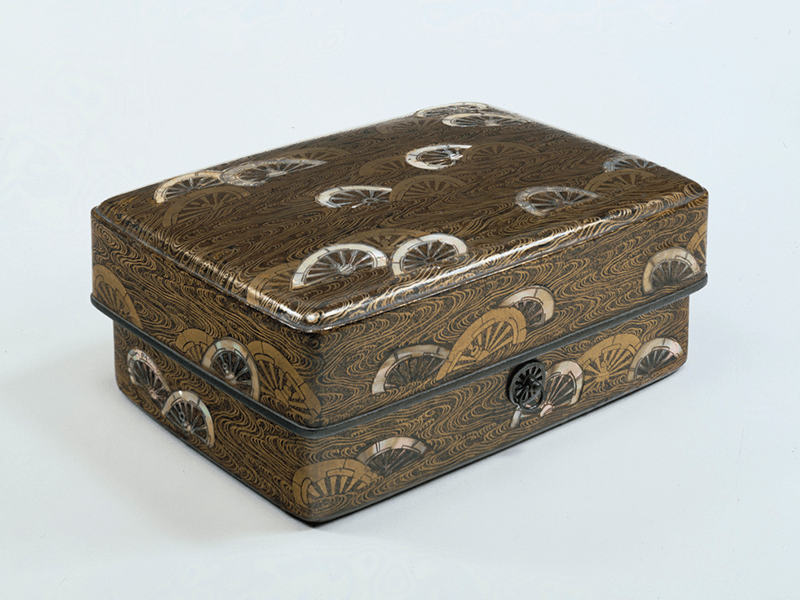A car covered in a sap-infused coating is not what you might expect to find at an exhibition celebrating lacquerware in Japan.
Beautifully decorated bowls, plates and other household objects are better known examples of the country’s urushi handicraft. But the red and black patterned vehicle is one of the newer items among the National Museum of Japanese History’s collection of lacquer-related objects spanning 12,000 years, on display from July 11.
The car was painted with a UV coating containing lacquer that dries quickly with a hard finished surface. Experts say this technique, patented by Fukushima Prefecture in 1998, is not popular yet and has been used on only a few cars. Still, it provides a glimpse of potentially new uses for sap traditionally extracted for ceremonial and household products, amid warnings of a “crisis” in Japan’s well-developed urushi culture.
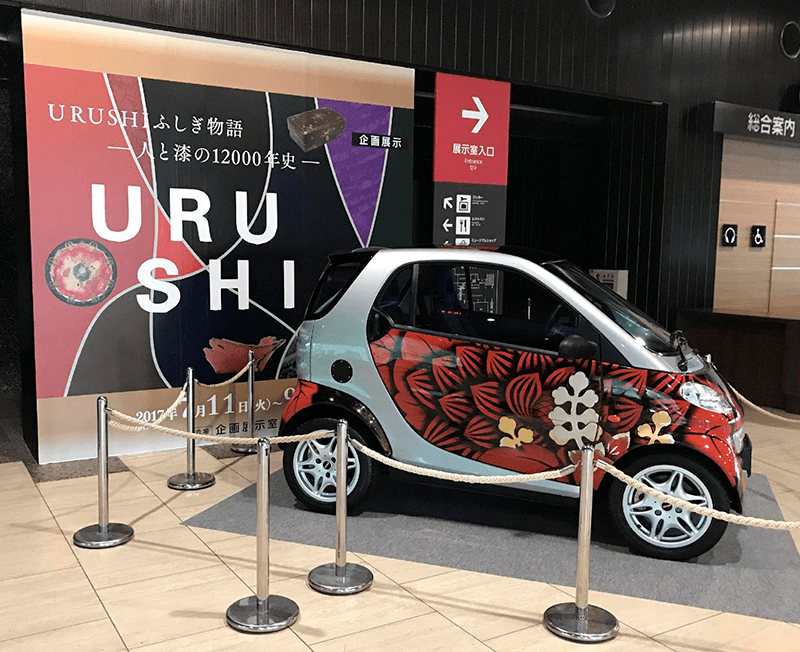
This decorated car with a UV coating containing lacquer is on display at the exhibition entrance. The lacquer was developed by Aizu-Wakamatsu Technical Assistance Center of the Fukushima Technology Center in collaboration with U-Aizu Corporation.
Professor Kaori Hidaka, a researcher involved in preparing the new exhibition, said lacquerware was becoming less familiar to Japanese people. She told Weekender this was driven by several factors, including the spread of cheap synthetic resin tableware. Hidaka added that imported sap from China was now used in 95 percent of lacquer production in Japan.
“For making lacquerware, we need lacquer sap. Lacquer sap is very precious,” she explained.
“After around 10 to 15 years of growing urushi trees, the sap may be harvested. Lacquer sap extraction [requires the] accumulation of knowledge and skill. It has become difficult to earn one’s living now by lacquer sap extraction – there has been a lack of new blood and insufficient human resources to carry on this work.”
The oldest item at the exhibition is a fragment of natural wood that was found in Fukui Prefecture in 2012. The piece was shown by radiocarbon dating to be 12,600 years old. While it is not an artificially produced object of the kind that would later become popular, the fragment provides important clues about the introduction to Japan of the sap tree species.
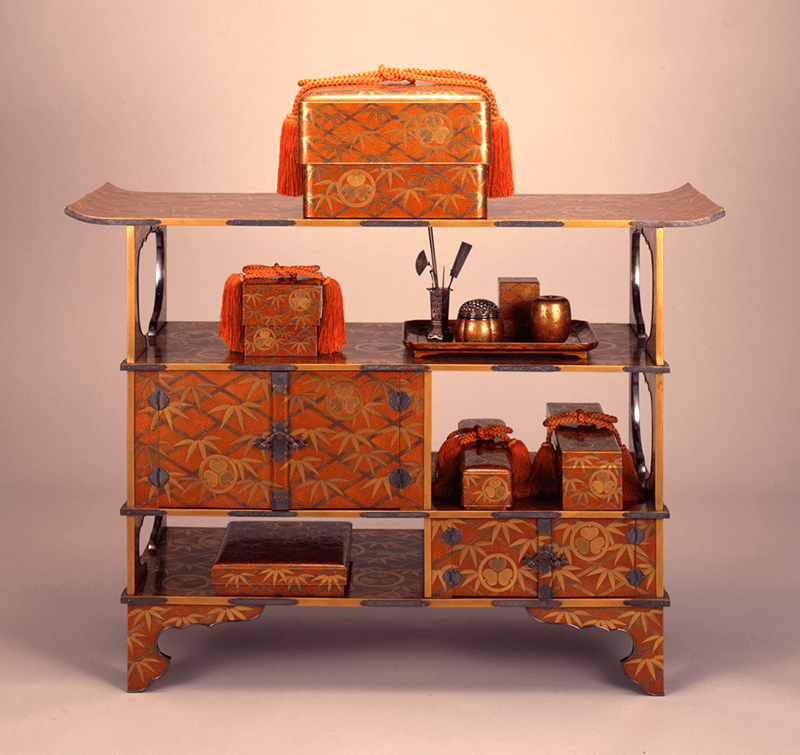
Set of furniture with design of diaper and bamboo,and aoi crests of hollyhock in maki-e, Cabinet (zushi-tana). Hayashibara Museum of Art, Edo period.
Toxicodendron vernicifluum is not a native species and does not grow without human cultivation in Japan, Hidaka noted. “Therefore we think that [the] urushi tree had been imported at least before 12,600 years ago and it seems to be ‘related’ with people in Japan at least from 12,600 years ago. It is the most important find of archaeobotany and archaeology concerning the lacquer culture in recent years.”
The exhibition’s 600 items also include a red lacquered wooden object from about 5500 years ago, an important cultural property from the early Jomon period. Visitors can see how lacquer craft techniques developed over time and how the items symbolized power and wealth. At one point the valuable sap was even collected as a tax.
Among other items on display are an ornate cosmetic box from the Heian period (794 to 1185), an armor chest featuring a chrysanthemum design from the Momoyama period (1573 to 1603), a lacquered helmet in the shape of rabbit ears from the Momoyama to Edo period, and sword mountings from the Edo period (1603 to 1868).
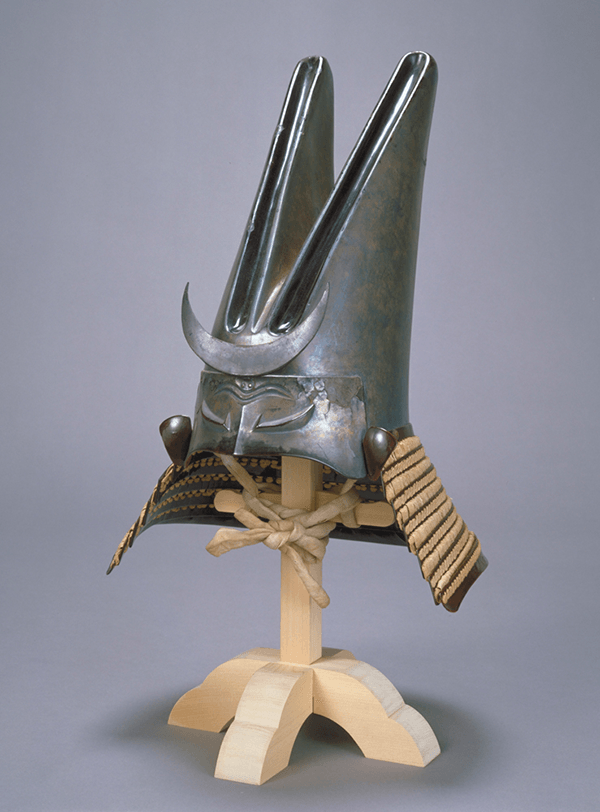
Lacquered helmet in the shape of rabbit ears. National Museum of Japanese History, Momoyama to Edo period.
It is not hard to see why pieces of Japanese lacquerware became popular trading items, with European countries ordering such products from the late 16th century onwards. A European style chest from the 17th century features fan patterns in maki-e – a lacquer technique that involves the use of gold or silver powder.
“It is important that we know more deeply about the culture and history of lacquer now, and to renew our awareness of the goodness and value of lacquer,” Hidaka said.
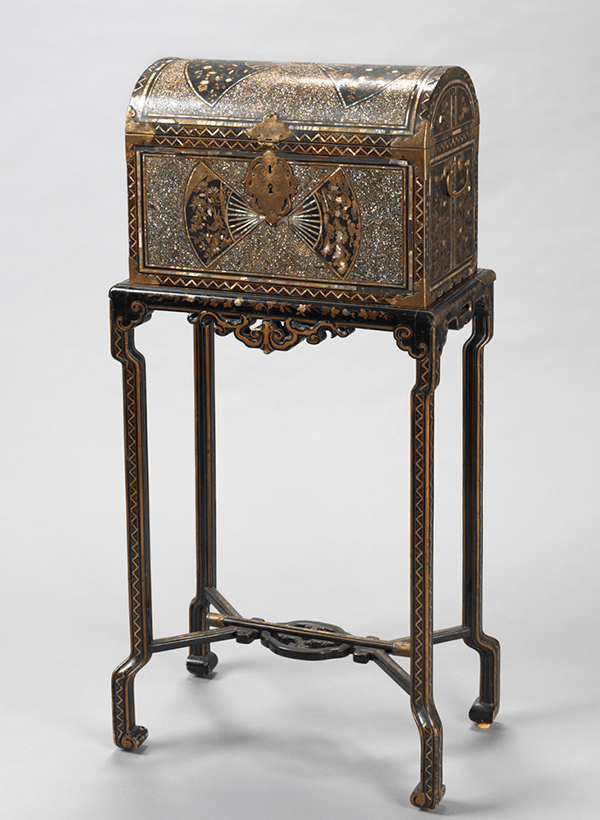
European style chest (with a stand) with design of fans in maki-e and mother-of-pearl inlay. National Museum of Japanese History, 17th Century.
The Wonders of Urushi: 12,000-Year History of People and Lacquer in Japan will be exhibited at the National Museum of Japanese History, near Narita, from July 11 to September 3, 2017. More details can be found here: http://www.rekihaku.ac.jp/english/
Main Image: (National treasure) Tebako (cosmetic box) with makie and mother-of-pearl inlaid design of wheels in stream. Tokyo National Museum, Heian period. Image: TNM Image Archives. Note: Please do not reproduce or copy the images used in the article without permission

